
Glencoe Math Accelerated, Student Edition
1st Edition
ISBN: 9780076637980
Author: McGraw-Hill Glencoe
Publisher: MCG
expand_more
expand_more
format_list_bulleted
Concept explainers
Question
Chapter 11.3, Problem 28IP
To determine
To find steps to create the tessellation given below.
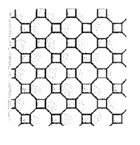
Expert Solution & Answer
Explanation of Solution
Given:
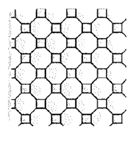
Calculation:
Consider a octagon and 2 squares.
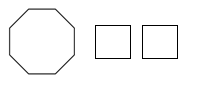
Now using the above figures, create a pattern.
Pattern:
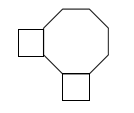
So, by using the above pattern, create a tessellation by repeating the pattern.
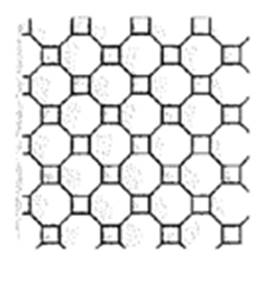
Conclusion:
Therefore, the above image is the required tessellation.
Chapter 11 Solutions
Glencoe Math Accelerated, Student Edition
Ch. 11.1 - Prob. 1GPCh. 11.1 - Prob. 2GPCh. 11.1 - Prob. 3GPCh. 11.1 - Prob. 4GPCh. 11.1 - Prob. 5GPCh. 11.1 - Prob. 6GPCh. 11.1 - Prob. 7GPCh. 11.1 - Prob. 8GPCh. 11.1 - Prob. 9GPCh. 11.1 - Prob. 10GP
Ch. 11.1 - Prob. 11IPCh. 11.1 - Prob. 12IPCh. 11.1 - Prob. 13IPCh. 11.1 - Prob. 14IPCh. 11.1 - Prob. 15IPCh. 11.1 - Prob. 16IPCh. 11.1 - Prob. 17IPCh. 11.1 - Prob. 18IPCh. 11.1 - Prob. 19IPCh. 11.1 - Prob. 20IPCh. 11.1 - Prob. 21IPCh. 11.1 - Prob. 22IPCh. 11.1 - Prob. 23IPCh. 11.1 - Prob. 24IPCh. 11.1 - Prob. 25IPCh. 11.1 - Prob. 26IPCh. 11.1 - Prob. 27IPCh. 11.1 - Prob. 28IPCh. 11.1 - Prob. 29IPCh. 11.1 - Prob. 30IPCh. 11.1 - Prob. 31IPCh. 11.1 - Prob. 32IPCh. 11.1 - Prob. 33IPCh. 11.1 - Prob. 34IPCh. 11.1 - Prob. 35HPCh. 11.1 - Prob. 36HPCh. 11.1 - Prob. 37HPCh. 11.1 - Prob. 38HPCh. 11.1 - Prob. 39STPCh. 11.1 - Prob. 40STPCh. 11.1 - Prob. 41STPCh. 11.1 - Prob. 42STPCh. 11.1 - Prob. 43CCRCh. 11.1 - Prob. 44CCRCh. 11.1 - Prob. 45CCRCh. 11.1 - Prob. 46CCRCh. 11.1 - Prob. 47CCRCh. 11.1 - Prob. 48CCRCh. 11.1 - Prob. 49CCRCh. 11.1 - Prob. 50CCRCh. 11.1 - Prob. 51CCRCh. 11.1 - Prob. 52CCRCh. 11.1 - Prob. 53CCRCh. 11.1 - Prob. 54CCRCh. 11.1 - Prob. 55CCRCh. 11.1 - Prob. 56CCRCh. 11.1 - Prob. 57CCRCh. 11.1 - Prob. 58CCRCh. 11.2 - Prob. 1GPCh. 11.2 - Prob. 2GPCh. 11.2 - Prob. 3GPCh. 11.2 - Prob. 4GPCh. 11.2 - Prob. 5GPCh. 11.2 - Prob. 6IPCh. 11.2 - Prob. 7IPCh. 11.2 - Prob. 8IPCh. 11.2 - Prob. 9IPCh. 11.2 - Prob. 10IPCh. 11.2 - Prob. 11IPCh. 11.2 - Prob. 12IPCh. 11.2 - Prob. 13IPCh. 11.2 - Prob. 14IPCh. 11.2 - Prob. 15IPCh. 11.2 - Prob. 16IPCh. 11.2 - Prob. 17IPCh. 11.2 - Prob. 18IPCh. 11.2 - Prob. 19IPCh. 11.2 - Prob. 20IPCh. 11.2 - Prob. 21IPCh. 11.2 - Prob. 22IPCh. 11.2 - Prob. 23IPCh. 11.2 - Prob. 24IPCh. 11.2 - Prob. 25IPCh. 11.2 - Prob. 26IPCh. 11.2 - Prob. 27IPCh. 11.2 - Prob. 28HPCh. 11.2 - Prob. 29HPCh. 11.2 - Prob. 30HPCh. 11.2 - Prob. 31HPCh. 11.2 - Prob. 32HPCh. 11.2 - Prob. 33STPCh. 11.2 - Prob. 34STPCh. 11.2 - Prob. 35STPCh. 11.2 - Prob. 36STPCh. 11.2 - Prob. 37CCRCh. 11.2 - Prob. 38CCRCh. 11.2 - Prob. 39CCRCh. 11.2 - Prob. 40CCRCh. 11.2 - Prob. 41CCRCh. 11.2 - Prob. 42CCRCh. 11.2 - Prob. 43CCRCh. 11.2 - Prob. 44CCRCh. 11.2 - Prob. 45CCRCh. 11.2 - Prob. 46CCRCh. 11.2 - Prob. 47CCRCh. 11.2 - Prob. 48CCRCh. 11.2 - Prob. 49CCRCh. 11.2 - Prob. 50CCRCh. 11.3 - Prob. 1GPCh. 11.3 - Prob. 2GPCh. 11.3 - Prob. 3GPCh. 11.3 - Prob. 4GPCh. 11.3 - Prob. 5GPCh. 11.3 - Prob. 6GPCh. 11.3 - Prob. 7GPCh. 11.3 - Prob. 8IPCh. 11.3 - Prob. 9IPCh. 11.3 - Prob. 10IPCh. 11.3 - Prob. 11IPCh. 11.3 - Prob. 12IPCh. 11.3 - Prob. 13IPCh. 11.3 - Prob. 14IPCh. 11.3 - Prob. 15IPCh. 11.3 - Prob. 16IPCh. 11.3 - Prob. 17IPCh. 11.3 - Prob. 18IPCh. 11.3 - Prob. 19IPCh. 11.3 - Prob. 20IPCh. 11.3 - Prob. 21IPCh. 11.3 - Prob. 22IPCh. 11.3 - Prob. 23IPCh. 11.3 - Prob. 24IPCh. 11.3 - Prob. 25IPCh. 11.3 - Prob. 26IPCh. 11.3 - Prob. 27IPCh. 11.3 - Prob. 28IPCh. 11.3 - Prob. 29IPCh. 11.3 - Prob. 30IPCh. 11.3 - Prob. 31IPCh. 11.3 - Prob. 32IPCh. 11.3 - Prob. 33IPCh. 11.3 - Prob. 34IPCh. 11.3 - Prob. 35IPCh. 11.3 - Prob. 36HPCh. 11.3 - Prob. 37HPCh. 11.3 - Prob. 38HPCh. 11.3 - Prob. 39HPCh. 11.3 - Prob. 40HPCh. 11.3 - Prob. 41STPCh. 11.3 - Prob. 42STPCh. 11.3 - Prob. 43STPCh. 11.3 - Prob. 44STPCh. 11.3 - Prob. 45CCRCh. 11.3 - Prob. 46CCRCh. 11.3 - Prob. 47CCRCh. 11.3 - Prob. 48CCRCh. 11.3 - Prob. 49CCRCh. 11.3 - Prob. 50CCRCh. 11.3 - Prob. 51CCRCh. 11.3 - Prob. 52CCRCh. 11.3 - Prob. 53CCRCh. 11.3 - Prob. 54CCRCh. 11.3 - Prob. 55CCRCh. 11.3 - Prob. 56CCRCh. 11.4 - Prob. 1GPCh. 11.4 - Prob. 2GPCh. 11.4 - Prob. 3IPCh. 11.4 - Prob. 4IPCh. 11.4 - Prob. 5IPCh. 11.4 - Prob. 6IPCh. 11.4 - Prob. 7IPCh. 11.4 - Prob. 8IPCh. 11.4 - Prob. 9IPCh. 11.4 - Prob. 10IPCh. 11.4 - Prob. 11IPCh. 11.4 - Prob. 12IPCh. 11.4 - Prob. 13IPCh. 11.4 - Prob. 14IPCh. 11.4 - Prob. 15IPCh. 11.4 - Prob. 16IPCh. 11.4 - Prob. 17IPCh. 11.4 - Prob. 18HPCh. 11.4 - Prob. 19HPCh. 11.4 - Prob. 20HPCh. 11.4 - Prob. 21HPCh. 11.4 - Prob. 22HPCh. 11.4 - Prob. 23STPCh. 11.4 - Prob. 24STPCh. 11.4 - Prob. 25STPCh. 11.4 - Prob. 26STPCh. 11.4 - Prob. 27CCRCh. 11.4 - Prob. 28CCRCh. 11.4 - Prob. 29CCRCh. 11.4 - Prob. 30CCRCh. 11.4 - Prob. 31CCRCh. 11.4 - Prob. 32CCRCh. 11.4 - Prob. 33CCRCh. 11.4 - Prob. 34CCRCh. 11.4 - Prob. 35CCRCh. 11.4 - Prob. 36CCRCh. 11.4 - Prob. 37CCRCh. 11.4 - Prob. 38CCRCh. 11.4 - Prob. 39CCRCh. 11.4 - Prob. 40CCRCh. 11.5 - Prob. 1GPCh. 11.5 - Prob. 2GPCh. 11.5 - Prob. 3GPCh. 11.5 - Prob. 4GPCh. 11.5 - Prob. 5IPCh. 11.5 - Prob. 6IPCh. 11.5 - Prob. 7IPCh. 11.5 - Prob. 8IPCh. 11.5 - Prob. 9IPCh. 11.5 - Prob. 10IPCh. 11.5 - Prob. 11IPCh. 11.5 - Prob. 12IPCh. 11.5 - Prob. 13IPCh. 11.5 - Prob. 14IPCh. 11.5 - Prob. 15IPCh. 11.5 - Prob. 16IPCh. 11.5 - Prob. 17HPCh. 11.5 - Prob. 18HPCh. 11.5 - Prob. 19HPCh. 11.5 - Prob. 20HPCh. 11.5 - Prob. 21HPCh. 11.5 - Prob. 22STPCh. 11.5 - Prob. 23STPCh. 11.5 - Prob. 24STPCh. 11.5 - Prob. 25STPCh. 11.5 - Prob. 26CCRCh. 11.5 - Prob. 27CCRCh. 11.5 - Prob. 28CCRCh. 11.5 - Prob. 29CCRCh. 11.5 - Prob. 30CCRCh. 11.5 - Prob. 31CCRCh. 11.5 - Prob. 32CCRCh. 11.5 - Prob. 33CCRCh. 11.5 - Prob. 34CCRCh. 11.5 - Prob. 35CCRCh. 11.5 - Prob. 36CCRCh. 11.5 - Prob. 37CCRCh. 11.5 - Prob. 38CCRCh. 11.5 - Prob. 39CCRCh. 11.6 - Prob. 1GPCh. 11.6 - Prob. 2GPCh. 11.6 - Prob. 3GPCh. 11.6 - Prob. 4IPCh. 11.6 - Prob. 5IPCh. 11.6 - Prob. 6IPCh. 11.6 - Prob. 7IPCh. 11.6 - Prob. 8IPCh. 11.6 - Prob. 9IPCh. 11.6 - Prob. 10IPCh. 11.6 - Prob. 11IPCh. 11.6 - Prob. 12IPCh. 11.6 - Prob. 13HPCh. 11.6 - Prob. 14HPCh. 11.6 - Prob. 15HPCh. 11.6 - Prob. 16HPCh. 11.6 - Prob. 17STPCh. 11.6 - Prob. 18STPCh. 11.6 - Prob. 19CCRCh. 11.6 - Prob. 20CCRCh. 11.6 - Prob. 21CCRCh. 11.6 - Prob. 22CCRCh. 11.6 - Prob. 23CCRCh. 11.6 - Prob. 24CCRCh. 11.6 - Prob. 25CCRCh. 11.7 - Prob. 1GPCh. 11.7 - Prob. 2GPCh. 11.7 - Prob. 3GPCh. 11.7 - Prob. 4GPCh. 11.7 - Prob. 5GPCh. 11.7 - Prob. 6IPCh. 11.7 - Prob. 7IPCh. 11.7 - Prob. 8IPCh. 11.7 - Prob. 9IPCh. 11.7 - Prob. 10IPCh. 11.7 - Prob. 11IPCh. 11.7 - Prob. 12IPCh. 11.7 - Prob. 13IPCh. 11.7 - Prob. 14IPCh. 11.7 - Prob. 15IPCh. 11.7 - Prob. 16IPCh. 11.7 - Prob. 17IPCh. 11.7 - Prob. 18IPCh. 11.7 - Prob. 19IPCh. 11.7 - Prob. 20HPCh. 11.7 - Prob. 21HPCh. 11.7 - Prob. 22HPCh. 11.7 - Prob. 23HPCh. 11.7 - Prob. 24HPCh. 11.7 - Prob. 25HPCh. 11.7 - Prob. 26STPCh. 11.7 - Prob. 27STPCh. 11.7 - Prob. 28STPCh. 11.7 - Prob. 29STPCh. 11.7 - Prob. 30CCRCh. 11.7 - Prob. 31CCRCh. 11.7 - Prob. 32CCRCh. 11.7 - Prob. 33CCRCh. 11.7 - Prob. 34CCRCh. 11.7 - Prob. 35CCRCh. 11.8 - Prob. 1GPCh. 11.8 - Prob. 2GPCh. 11.8 - Prob. 3GPCh. 11.8 - Prob. 4GPCh. 11.8 - Prob. 5IPCh. 11.8 - Prob. 6IPCh. 11.8 - Prob. 7IPCh. 11.8 - Prob. 8IPCh. 11.8 - Prob. 9IPCh. 11.8 - Prob. 10IPCh. 11.8 - Prob. 11IPCh. 11.8 - Prob. 12IPCh. 11.8 - Prob. 13IPCh. 11.8 - Prob. 14IPCh. 11.8 - Prob. 15IPCh. 11.8 - Prob. 16IPCh. 11.8 - Prob. 17HPCh. 11.8 - Prob. 18HPCh. 11.8 - Prob. 19HPCh. 11.8 - Prob. 20HPCh. 11.8 - Prob. 21STPCh. 11.8 - Prob. 22STPCh. 11.8 - Prob. 23STPCh. 11.8 - Prob. 24STPCh. 11.8 - Prob. 25CCRCh. 11.8 - Prob. 26CCRCh. 11.8 - Prob. 27CCRCh. 11.8 - Prob. 28CCRCh. 11.8 - Prob. 29CCRCh. 11.8 - Prob. 30CCRCh. 11.8 - Prob. 31CCRCh. 11.8 - Prob. 32CCRCh. 11.8 - Prob. 33CCRCh. 11.8 - Prob. 34CCRCh. 11.8 - Prob. 35CCRCh. 11 - Prob. 1CRCh. 11 - Prob. 2CRCh. 11 - Prob. 3CRCh. 11 - Prob. 4CRCh. 11 - Prob. 5CRCh. 11 - Prob. 6CRCh. 11 - Prob. 7CRCh. 11 - Prob. 8CRCh. 11 - Prob. 9CRCh. 11 - Prob. 10CRCh. 11 - Prob. 11CRCh. 11 - Prob. 12CRCh. 11 - Prob. 13CRCh. 11 - Prob. 14CRCh. 11 - Prob. 15CRCh. 11 - Prob. 16CRCh. 11 - Prob. 17CRCh. 11 - Prob. 18CRCh. 11 - Prob. 19CRCh. 11 - Prob. 20CRCh. 11 - Prob. 21CRCh. 11 - Prob. 22CRCh. 11 - Prob. 23CRCh. 11 - Prob. 24CRCh. 11 - Prob. 25CRCh. 11 - Prob. 26CRCh. 11 - Prob. 27CRCh. 11 - Prob. 28CRCh. 11 - Prob. 29CRCh. 11 - Prob. 30CRCh. 11 - Prob. 31CRCh. 11 - Prob. 32CRCh. 11 - Prob. 33CRCh. 11 - Prob. 34CR
Additional Math Textbook Solutions
Find more solutions based on key concepts
Use the Substitution Formula in Theorem 7 to evaluate the integrals in Exercises 1–48.
29.
University Calculus: Early Transcendentals (4th Edition)
A student has to sell 2 books from a collection of 6 math, 7 science, and 4 economics books. How many choices a...
A First Course in Probability (10th Edition)
Views on Capital Punishment Use the data given in Exercise 7.23. Make the two given tables into one table by co...
Introductory Statistics
CHECK POINT 1 Write a word description of the set L = {a, b, c, d, e, f}.
Thinking Mathematically (6th Edition)
Moving shadow A 5-foot-tall woman walks at 8 ft/s toward a streetlight that is 20 ft above the ground. What is ...
Calculus: Early Transcendentals (2nd Edition)
Answer the following regarding the English alphabet. a. Determine the ratio of vowels to consonants. b. What is...
A Problem Solving Approach To Mathematics For Elementary School Teachers (13th Edition)
Knowledge Booster
Learn more about
Need a deep-dive on the concept behind this application? Look no further. Learn more about this topic, calculus and related others by exploring similar questions and additional content below.Similar questions
- Find the Taylor polynomial T³(×) for the function f centered at the number a. f(x) = xe-2x a = 0 T3(x) =arrow_forwardFor each graph in Figure 16, determine whether f (1) is larger or smaller than the slope of the secant line between x = 1 and x = 1 + h for h > 0. Explain your reasoningarrow_forwardPoints z1 and z2 are shown on the graph.z1 is at (4 real,6 imaginary), z2 is at (-5 real, 2 imaginary)Part A: Identify the points in standard form and find the distance between them.Part B: Give the complex conjugate of z2 and explain how to find it geometrically.Part C: Find z2 − z1 geometrically and explain your steps.arrow_forward
- A polar curve is represented by the equation r1 = 7 + 4cos θ.Part A: What type of limaçon is this curve? Justify your answer using the constants in the equation.Part B: Is the curve symmetrical to the polar axis or the line θ = pi/2 Justify your answer algebraically.Part C: What are the two main differences between the graphs of r1 = 7 + 4cos θ and r2 = 4 + 4cos θ?arrow_forwardA curve, described by x2 + y2 + 8x = 0, has a point A at (−4, 4) on the curve.Part A: What are the polar coordinates of A? Give an exact answer.Part B: What is the polar form of the equation? What type of polar curve is this?Part C: What is the directed distance when Ø = 5pi/6 Give an exact answer.arrow_forwardNew folder 10. Find the area enclosed by the loop of the curve (1- t², t-t³)arrow_forward
- 1. Graph and find the corresponding Cartesian equation for: t X== y = t +1 2 te(-∞, ∞) 42,369 I APR 27 F5 3 MacBook Air stv A Aa T 4 DIIarrow_forwardMiddle School GP... Echo home (1) Addition and su... Google Docs Netflix Netflix New folder 9. Find the area enclosed by x = sin²t, y = cost and the y-axis.arrow_forward2. Graph and find the corresponding Cartesian equation for: (4 cos 0,9 sin 0) θ ε [0, 2π) 42,369 I APR 27 3 MacBook Air 2 tv A Aaarrow_forward
- 30 Page< 3. Find the equation of the tangent line for x = 1+12, y = 1-3 at t = 2 42,369 APR A 27 M . tv NA 1 TAGN 2 Aa 7 MacBook Air #8arrow_forwardEvaluate the following integrals as they are writtenarrow_forwardCalculus lll May I please have the blank lines completed, and final statement defined as a result? Thank you for the support!arrow_forward
arrow_back_ios
SEE MORE QUESTIONS
arrow_forward_ios
Recommended textbooks for you
 Calculus: Early TranscendentalsCalculusISBN:9781285741550Author:James StewartPublisher:Cengage Learning
Calculus: Early TranscendentalsCalculusISBN:9781285741550Author:James StewartPublisher:Cengage Learning Thomas' Calculus (14th Edition)CalculusISBN:9780134438986Author:Joel R. Hass, Christopher E. Heil, Maurice D. WeirPublisher:PEARSON
Thomas' Calculus (14th Edition)CalculusISBN:9780134438986Author:Joel R. Hass, Christopher E. Heil, Maurice D. WeirPublisher:PEARSON Calculus: Early Transcendentals (3rd Edition)CalculusISBN:9780134763644Author:William L. Briggs, Lyle Cochran, Bernard Gillett, Eric SchulzPublisher:PEARSON
Calculus: Early Transcendentals (3rd Edition)CalculusISBN:9780134763644Author:William L. Briggs, Lyle Cochran, Bernard Gillett, Eric SchulzPublisher:PEARSON Calculus: Early TranscendentalsCalculusISBN:9781319050740Author:Jon Rogawski, Colin Adams, Robert FranzosaPublisher:W. H. Freeman
Calculus: Early TranscendentalsCalculusISBN:9781319050740Author:Jon Rogawski, Colin Adams, Robert FranzosaPublisher:W. H. Freeman
 Calculus: Early Transcendental FunctionsCalculusISBN:9781337552516Author:Ron Larson, Bruce H. EdwardsPublisher:Cengage Learning
Calculus: Early Transcendental FunctionsCalculusISBN:9781337552516Author:Ron Larson, Bruce H. EdwardsPublisher:Cengage Learning

Calculus: Early Transcendentals
Calculus
ISBN:9781285741550
Author:James Stewart
Publisher:Cengage Learning

Thomas' Calculus (14th Edition)
Calculus
ISBN:9780134438986
Author:Joel R. Hass, Christopher E. Heil, Maurice D. Weir
Publisher:PEARSON

Calculus: Early Transcendentals (3rd Edition)
Calculus
ISBN:9780134763644
Author:William L. Briggs, Lyle Cochran, Bernard Gillett, Eric Schulz
Publisher:PEARSON

Calculus: Early Transcendentals
Calculus
ISBN:9781319050740
Author:Jon Rogawski, Colin Adams, Robert Franzosa
Publisher:W. H. Freeman


Calculus: Early Transcendental Functions
Calculus
ISBN:9781337552516
Author:Ron Larson, Bruce H. Edwards
Publisher:Cengage Learning
Finding the length of an arc; Author: Maths Genie;https://www.youtube.com/watch?v=fWGPf5peCc8;License: Standard YouTube License, CC-BY
Circles, Angle Measures, Arcs, Central & Inscribed Angles, Tangents, Secants & Chords - Geometry; Author: The Organic Chemistry Tutor;https://www.youtube.com/watch?v=nd46bA9DKE0;License: Standard Youtube License